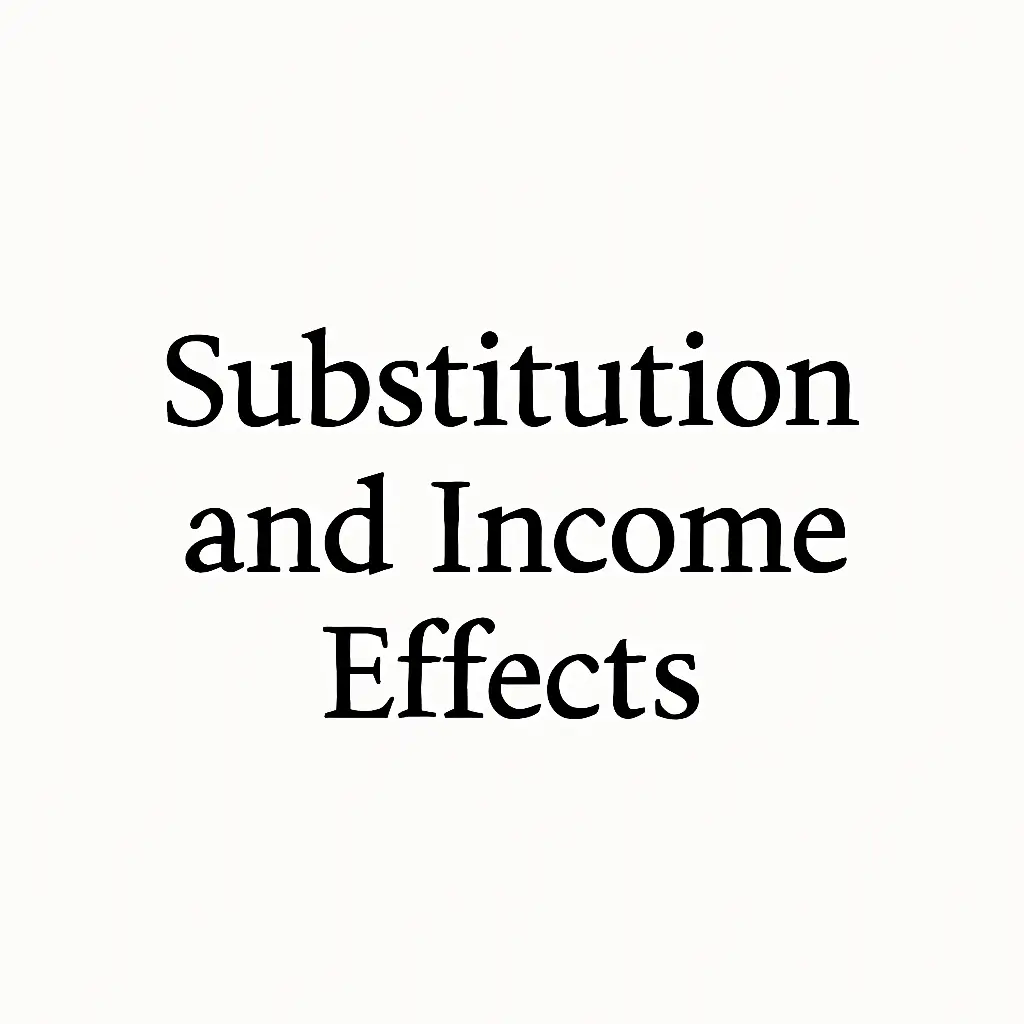🍷 Micro-Exercise: Income & Substitution Effects for Red Wine
John’s demand for red wine is
where
- = bottles of wine demanded
- = income (in $)
- = price per bottle (in $)
John earns $9 000 and initially pays $50 per bottle.
The price rises to $60.
Break the resulting change in demand into a substitution effect and an income effect (use the Slutsky method).
✍️ Solution
| Step | Calculation | Result |
|---|---|---|
| 1. Original quantity | 80 bottles | |
| 2. New quantity (with old income) | 60 bottles | |
| 3. Compensating income(keep the purchasing power for the original bundle) | $9 800 | |
| 4. Compensated quantity(new price, compensated income) | 76 bottles | |
| 5. Decomposition | ||
| – Substitution effect | -4 bottles | |
| – Income effect | -16 bottles | |
| – Total change (check) | ✓ matches |
🔎 Interpretation
- Substitution effect (-4 bottles)
At the higher price but with extra income just large enough to buy the original bundle, John still cuts back by 4 bottles because red wine is now relatively more expensive than other goods. - Income effect (-16 bottles)
Once the extra $800 is taken away (i.e., we go back to John’s actual $9 000 income), his real purchasing power falls, leading to a further 16-bottle drop.
The entire 20-bottle reduction is therefore split into 4 bottles from substitution and 16 bottles from income.
Key takeaway: For linear demand curves like this one, both effects usually matter.
The Slutsky income adjustment is —keep that handy for quick checks.

